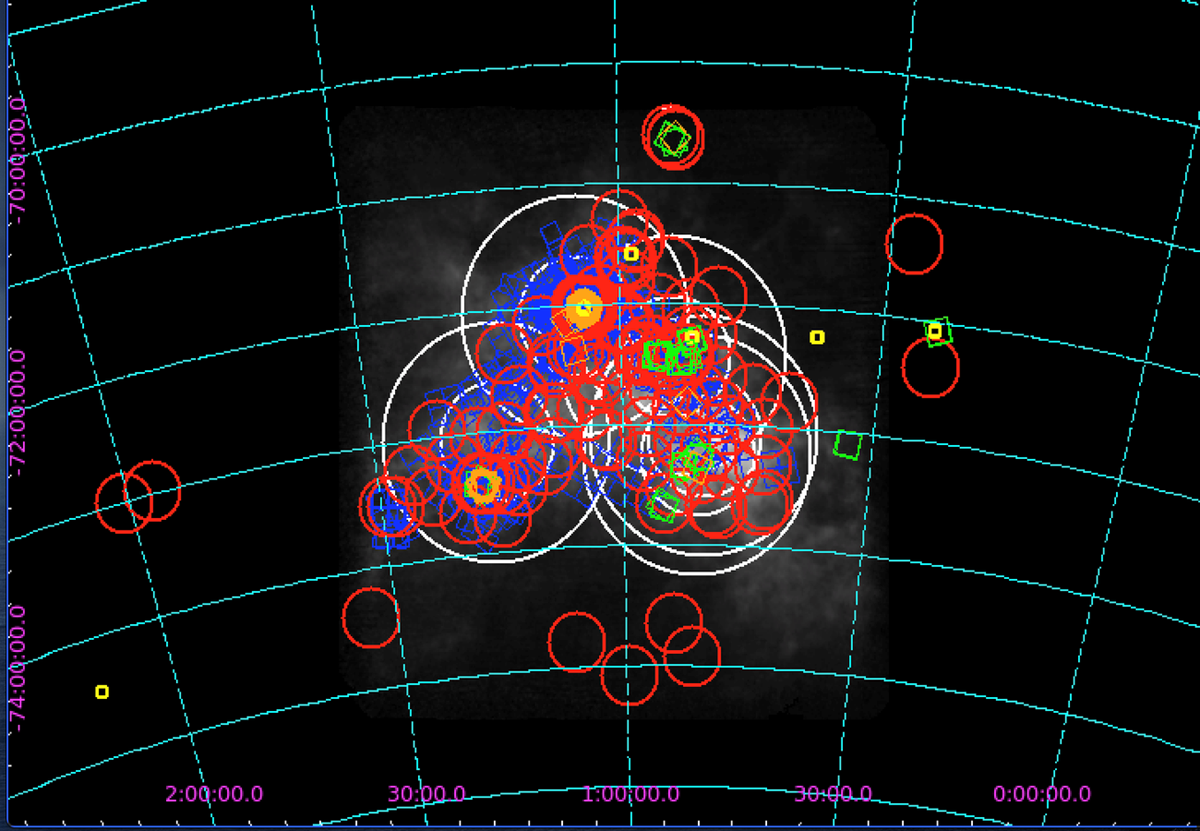Our Project
We have processed and analyzed vast archives of data from different X-ray telescopes to produce high-level data products related to XRPs in the Small Magellanic Cloud (SMC) galaxy. The SMC hosts a large number of such XRBs. It is our hope that this database will help the scientific community to construct and test new models and analyze NS magnetospheres and accretion processes. This work was supported by NASA ADAP grants NNX14-AF77G and 80NSSC18K0430.
This video traces all the detections of the different Pulsars in the Small Magellanic Cloud by five telescopes, namely, RXTE, XMM-Newton, Chandra, NuSTAR and Suzaku from 1997-2019.
Introduction to the Library
The library contains high-level data products related to all known XRPs (~70) in the SMC compiled from six X-ray telescope missions (~2000 pointed observations) namely, XMM-Newton, RXTE, Chandra, NuSTAR, NICER and Suzaku, spanning across a period of two decades up until 2019. We have also published the new updated SMC XRP list with the latest coordinates.
The library contains source specific event files (gti and barycenter corrected), source images, light curves (in three different energy bands titled soft, broad and hard), spectra, periodograms, and pulse profiles.
This enables us to investigate and look for long term evolutionary patterns in the temporal and spectral parameters of the XRPs. These trends will be essential to trace the changes happening in the accretion geometry as well as the orientation of the circumstellar disks of these pulsars. Furthermore, this huge reservoir of data will aid the wider Astrophysics community to construct more accurate scientific models to better understand the NS magnetosphere and its orientation. This combined pool of data from six different missions also provides users the luxury to access both high temporal as well as good spatial resolution products at the same time. By modeling pulse-profiles for the same pulsar on many different occasions, over its full range of luminosity we can quantify and track changes in pulse shape, and look for what is driving these changes.

The Small Magellanic Cloud has been observed repeatedly and often since the dawn of X-ray astronomy. The figure above is a map of the SMC (in 21 cm HI radio emission) with outlines of all observations by Chandra (Blue), XMM-Newton (Red), NuSTAR (Green), and RXTE (White), Suzaku (Orange) and NICER (Yellow).
Instructions to Access the Library
In order to enter the Sharepoint site, the user will have to initially email the administrators maintaining the site, to ask for access request. Their email addresses are shared below. It is suggested that more than one person is mailed, for seeking early response. Primarily Silas Laycock, Ankur Roy, and Sayantan Bhattacharya will be handling this.
Note: It is required that the user should have an Outlook/Microsoft Email address to do so. One can create a free Outlook Email by visiting Microsoft Outlook's website.
After this, the user is requested to wait for sometime as their information gets routed to the administrators. You will be expecting to receive an email allowing you to enter the site. Kindly please check your spam folders too for the email.
Please do leave any constructive comments/feedback regarding the Library and the site. Any doubts/questions should be emailed to the following addresses:
- Silas Laycock, Professor, UMass Lowell - Email: Silas_Laycock@uml.edu, Website: Silas Laycock Faculty website
- Ankur Roy, UMass Lowell Grad Student - Email: Ankur_Roy@student.uml.edu
- Rigel Cappallo, Post-Doc, UMass Lowell - Email: rigelcappallo@gmail.com
- Sayantan Bhattacharya, UMass Lowell Grad Student - Email: Sayantan_Bhattacharya@student.uml.edu
- Dimitris Christodoulou, Assistant Teaching Professor, UMass Lowell - Email: Dimitris_Christodoulou@uml.edu
